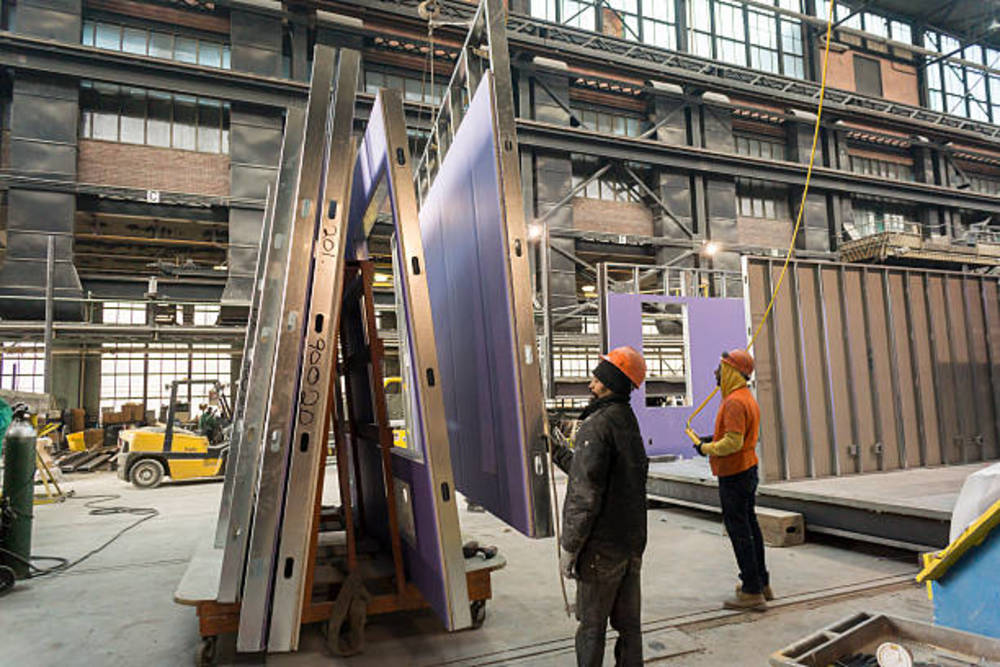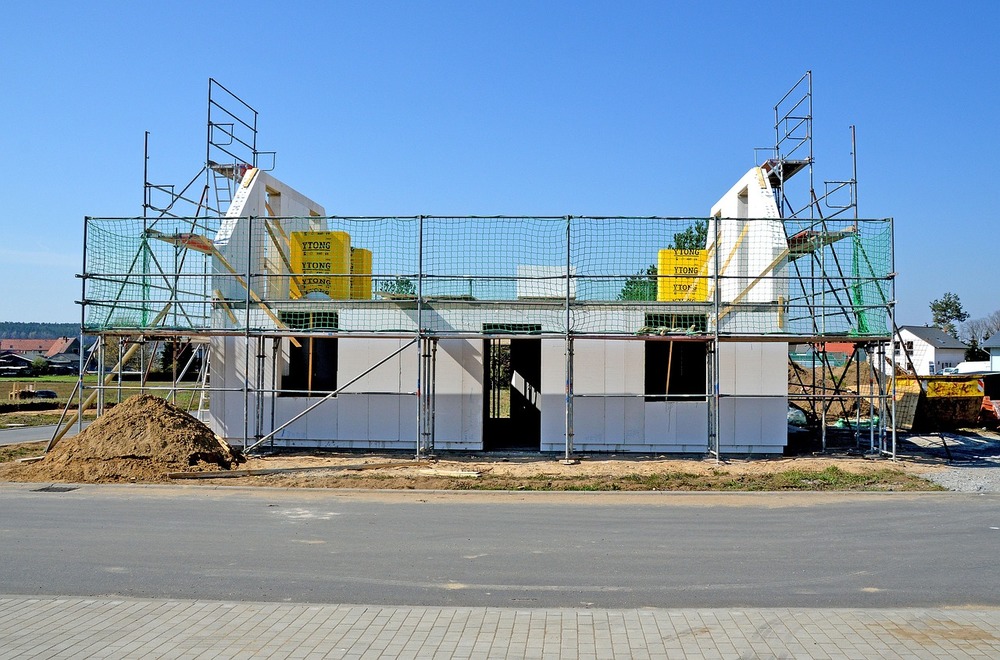This article is part of a blog series exploring how Prefabrication and Modular Construction change the way structures are built.
Increasingly, general contractors, architects, and developers are finding that prefabrication and modular construction help keep costs low, shorten the construction timeline, and reduce waste. Dodge Data & Analytics statistics confirm this statement.
90% of respondents to Dodge’s 2020 Prefabrication and Modular Construction Report said that prefabrication and modular construction methods were more beneficial than traditional construction.
Both prefabrication and modular construction can improve safety and quality, reduce costs and schedules, and enhance sustainability performances despite workforce shortages, supply chain uncertainties, and other challenges.
Digitalization has now been adopted by the construction industry, opening new opportunities. While there are several technologies that are revolutionizing the construction industry, Building Information Modelling (BIM) usages and processes play a significant role in the prefabrication modular approaches.
The following are the principal areas where to use BIM:
Visual representation
BIM models virtually portray the entire lifecycle of a building. At the strategic stage, you use the BIM model to run alternative scenarios to envisage the entire planned project. You can share the visual representations with clients and other stakeholders, allowing all parties involved to be on the same page from the very beginning. Here is a small video of a BIM Visualization Application.
Simulation
We often hear BIM software is just a design tool. This is a misunderstanding. In the BIM process, you start with the design and then use tools, which can include 3D modeling capabilities. Then you simulate and visualize various elements of the physical building. You can apply real-life conditions to the model:
- simulating the use of varied materials to determine the right options for the project
- assessing the energy-efficiency levels of the building
- finding areas that require optimization
- ensuring compliance with the owners’ requirements.
Problem detection
You can detect any potential issues and make functional design changes before it is too late, avoiding costly reworks in the construction phase. Use Plannerly’s Verify module or download the scope data for model checking in Solibri, 3D Repo, BIM Assure, Assemble, and others to check the model.
Benefits of BIM when designing modular buildings

From a survey conducted by Dodge Data & Analytics, there were several positive impacts of BIM that were cited by the respondents. The top three impacts when designing modular buildings with BIM are:
Improved schedule performance
Thanks to information-sharing through a mutually accessible online platform, all stakeholders are on the same page from inception to operation, to completion, which helps to keep things on track.
Minimized construction costs
Evaluate various possibilities and find the most feasible and viable one. Then detect and resolve potential problems, and correct them before starting the construction. This way, errors and clashes will be caught in the design phase, rather than at the construction phase, and avoid costly reworks.
Improved project quality
Discover at the early stage of a project areas that require optimization to meet the quality and safety standards.
Many stakeholders in the construction industry have realized these and other BIM benefits, and BIM is growing in adoption. In fact, 99 percent of BIM users will be leveraging the technology for modular construction in the next three years.
Structural modularity to consider in design
Many items can be truly modular and/or simply prefabricated based on current manufacturing methods. Here are the main classes to differentiate items:
- panelized systems are flat assemblies that often focus on the wall, roof, and floor systems
- 3D modular or volumetric systems are volume spaces that are often made up of panels
- structural elements/sub-assembly systems can be considered prefabricated.
The more standardized, consistent, and repetitious the dimensions are, the larger the number of components that can be prefabricated.
Information needed in modular BIM is still unknown as it has not been studied and deployed very often, particularly with no proven and efficient software to run simulations.
Processes supporting modular construction

Current technology and lack of integrated and collaborative delivery do not actively support modular construction to make a real impact.
When designing your processes, you should make sure that they will help all project team members to better understand other stakeholders’ roles. You should also define workflows that support integrating computational modeling between disciplines to carry and test design ideas to support modular, prefabrication, and off-site construction.
The most usual trades that modularity and prefabrication are affecting are the architectural, structural, and MEP disciplines.
Modular provides a set of rules needed for dividing the layout into units and specifies allowable module dimensions based on road regulations, acceptable dividing elements, and rules related to structural systems capabilities.
Plannerly advocates for Smartleanbim. The process is as follows:
Planning
Traditional BIM Execution Plans (BEPs) are mostly ignored. To unlock the true potential of BIM, you should plan early, have access to templates, and make them more engaging using dynamic content such as videos.
Scoping
Define a visual, collaborative framework that follows ISO 19650 requirements for geometry, documentation, and information.
Contracting
The AECO industry runs on contracts – you should make them simple to prepare, agree, and act on!
Scheduling
Build a schedule in collaboration with all project teams to plan tasks in sequence, and cause fewer coordination issues.
Tracking
The Lean approach to project management allows you to focus on continuous BIM delivery.
Verifying
Connect models and owners’ requirements so you know what gets planned will get built.
Business case for a modular construction solution

The Hilda L. Solis Care First Village, a project in downtown Los Angeles for which the scope was to:
- spend $48 million
- build 232 units
- be erected in a matter of months.
The project was built next to the Men’s Central Jail, with CRATE Modular components that manufacture modular construction components for multifamily, educational facilities, and commercial and hospitality spaces.
The project helped to:
- address the housing affordability crisis
- streamline the construction process
- save time
- reduce the need for labor.
Carson, California–based manufacturer was awarded the contract. Jaren Grady, director of business development, says:
The goal for any developer is the return on investment and so, the sooner you complete a building product, the sooner it can be occupied, and it can start collecting revenue or rents the better.
The city got an almost immediate return on investment on this project, which was a six-month turnaround from idea to occupancy, but more importantly, it helped many formerly homeless people get off the streets and receive the help they deserve.
Modular construction is an ideal way to build any project because it offers a repeatable and scalable approach. With modular or factory-built housing, we can compress the construction schedule by doing concurrent activities. In other words, at the same time, the site is being developed—i.e., site grading, sewer, and utility connections for water, power, and gas. The building modules are being built in an environmentally controlled, clean, and orderly factory setting. Most of the time the building modules are completed and ready for delivery before the site is completed.
The results
The cost per unit was around $245,000 compared to the average cost of $535,000 per unit in California, at the time.
Planning for the future

Modular construction accounted for approximately 6 percent of new construction in 2022 in North America, according to the trade organization Modular Building Institute.
The Biden administration budget proposed that $25 billion be set aside for Grants for Affordable Housing Production, which would include new modular projects.
Jeffrey Lubell, a leading authority on housing and community development at the Rockville, Maryland-based research, and consulting firm Abt Associates, consider that building offsite can:
- increase flexibility
- produce less waste
- use materials more efficiently
- achieve economies of scale allowing the construction of large volumes of housing at a lower cost.
Wood is often used in modular construction as well as steel.
More architectural firms have incorporated modular into their design offerings. The best design approach is standardization.
During the design stage of the modular process, you should follow the design for manufacturing and assembly (DFMA) principles:
- reducing time-to-market
- lowering the total production
- prioritizing the ease of manufacture for the product parts
- simplifying the assembly of those parts into the final product.
Easy planning permit
The permitting period is typically less because the city or county has less to review because the state is reviewing the modules. However, dealing with policies and codes in different cities can often prove to be challenging.
Easy design
You build a digital twin model of the building. You specify how many screws and bolts you will be using in a detailed bill of materials (BOM) through BIM, so you will know:
- which material and how much material will be required
- the total cost of materials
- how to minimize or even eliminate change orders.
The same floor plans and modules are reused in other projects. It helps the quality control process by:
- having an overview of what should be built before it runs down the line
- running the line when you are sure you have everything you need
- most decision-making is done ahead of time.
Fabrication and construction are like traditional practices, but now more work shifts to a factory that can be automated and/or staffed by the human workforce. Before this becomes mainstream, the industry will require new software that can link the current BIM tools with manufacturing and coordination processes. This is critical for modular construction as no good mainstream tools exist currently.
In conclusion

The process of planning, designing, and constructing a modular building is a complex venture that takes many skilled participants.
Structurally speaking, the process has a natural evolution in the design but there remain barriers to adopting integrated practices and larger-scale modularization concepts.
An integrated process that deploys BIM-based technology to support collaboration is highly recommended.
Modular concepts and schemes must be considered early before the form of the building is finalized or the opportunities will quickly become limited.
Close collaboration is needed between the structural systems within the module and secondary supporting systems to ensure the stability, integrity, and functionality of the structural system.
The module process progresses faster and the detailing of who participates and the connections between them should be done at the initial stages of the design.
Driving Vision's technology appraisal looks at the best way to insert modern technology in your workflows and how to move your organization to cloud computing so you can open new possibilities for your daily planning tasks and make sure your data never leaves the optimally secured data center.
A Driving Vision expert will conduct the interviews online and will discuss the report and our findings with you. Together we will decide the best way to implement the solutions at your pace and according to your budget.
Implementing BIM can be daunting, but Driving Vision is here to help you at the pace you are comfortable with. Get started by getting in touch now







